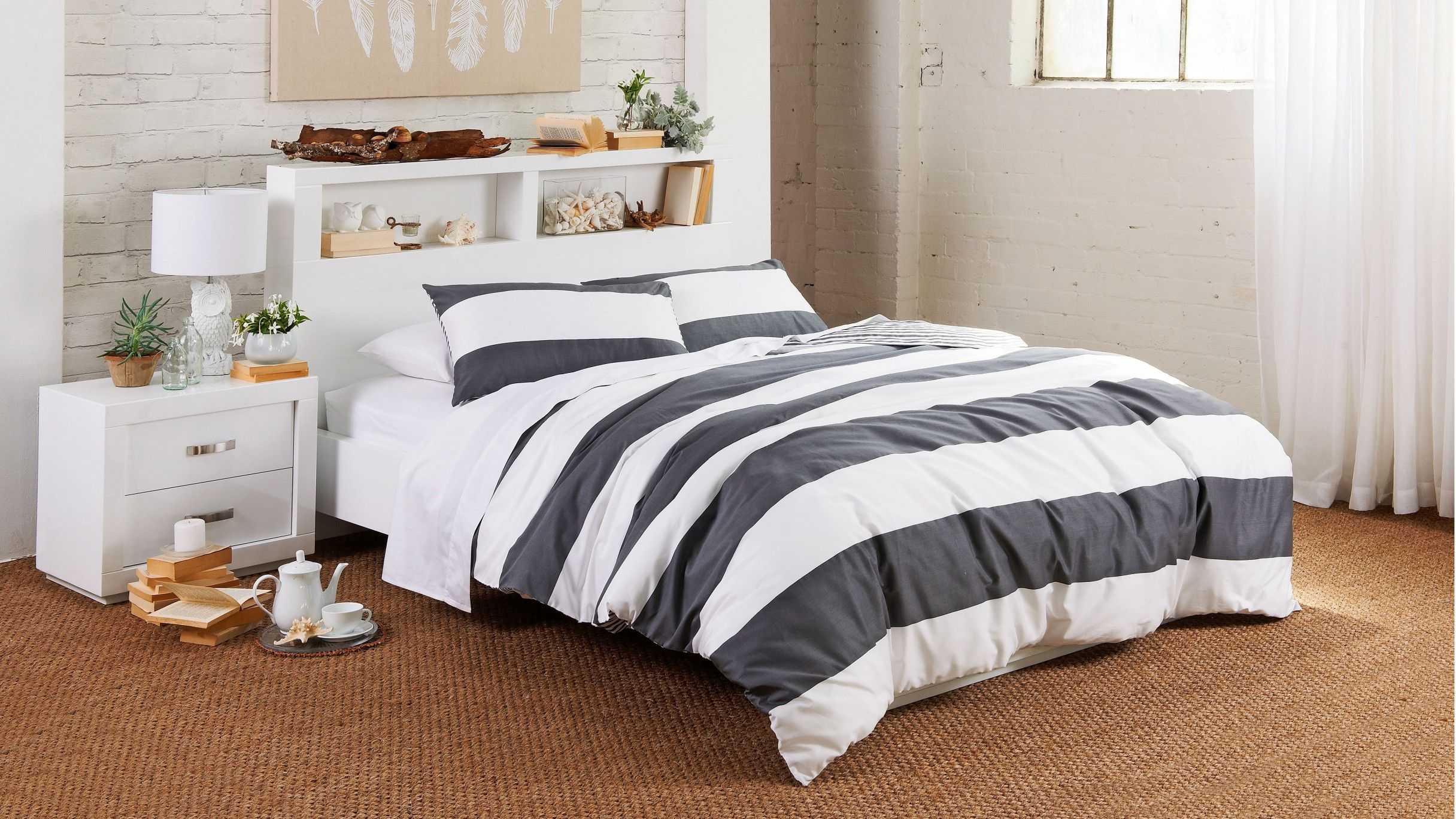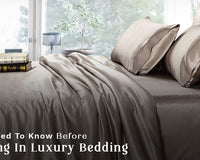A form of bedding known as a stripe duvet cover has a surface design of horizontal, vertical, or diagonal stripes. It is a popular option for giving any bedroom design a dash of flare and class. To keep it clean, fresh, and in new condition, it has to be appropriately maintained, just like any other piece of bedding.
This article will address the value of keeping your stripe duvet cover and provide detailed instructions on how to do so.
Understanding Your Striped Duvet Cover
Various fabrics, such as cotton, polyester, and silk, have various properties and call for various cleaning techniques. When purchasing a striped black white duvet cover, the fabric is a crucial factor to consider.
Also, several stripes are designed, each with unique variants, including awnings, pinstripes, and vertical and horizontal stripes. It's crucial to think about the pattern and colour scheme that will go best with your bedroom decor when purchasing a striped duvet cover.
Washing Your Stripe Duvet Cover
Your striped duvet cover must be adequately washed to stay clean and fresh. Your stripe duvet cover should be washed every one to two weeks or more often if it seems discoloured or unclean. This aids in preventing the accumulation of dust, oils, and germs that may impair your sleep.
Recommended Washing Methods For Different Materials
Various cleaning techniques are needed for various materials. In general, washing machines may wash cotton and polyester covers using a moderate detergent and cold or warm water. Covers made of linen and silk demand more careful maintenance, such as hand washing or dry cleaning. When washing your duvet cover, always read the care label to ensure you follow the manufacturer's instructions.
Tips For Washing The Cover Without Damaging It
- Be sure to wash your duvet cover separately from other things and avoid overfilling the washing machine to prevent damage during washing.
- Use a moderate cycle and a light detergent to avoid colour fading or shrinking.
- Avoid fabric softener or bleach since they might ruin the cloth's stripes.
How To Remove Stains From A Duvet Cover?
Treat stains on your duvet cover as soon as you can. Use warm water and detergent to wipe stains from food or beverages gently. Before washing, soak up oil-based stains with baking soda or a pre-treatment stain remover. Take your duvet cover to a professional cleaner for tough stains.
You may use these suggestions to prolong the appearance of your striped duvet cover.
Drying Your Striped Duvet Cover
Your striped duvet cover must be adequately dried after washing to keep its quality and look.
Best Methods For Drying A Duvet Cover
Hanging your striped duvet cover outdoors in the shadow and out of direct sunshine is the best way to dry it since the sun may fade. You may tumble dry your cover on low heat to avoid over-drying and shrinking. Remember to remove it from the dryer when it's still somewhat moist.
How To Prevent Shrinking When Drying?
Avoid excessive heat while drying, and always read the care label for the proper drying temperature recommendations. Moreover, avoiding overdrying your cover is crucial since this might harm the fabric and cause shrinkage. Use the dryer to a low heat or delicate cycle if you use one.
A Substitute For Air Drying
Use a drying rack or hang your duvet cover from a clothesline if you don't have enough room to let it air dry or if you want to hasten the drying process. Hang it evenly and avoid hanging it near a corner or edge to prevent stretching.
Ironing Your Striped Duvet Cover
Although ironing is not always essential, if it is, use a low to medium heat setting and iron the cover's backside to avoid destroying the striped design. To get rid of creases and wrinkles, a steam iron is advised.
Storing Your Stripe Duvet Cover
Keep your duvet cover out of direct sunlight in an excellent, dry location. The cover should be properly folded and kept in a ventilated fabric storage bag. Avoid keeping items in plastic bags since they may retain moisture and lead to mould or mildew growth.
How To Care For A Striped Duvet Cover?
Maintaining your striped duvet cover is crucial to keeping it in excellent shape and appearing new.
- Wash your duvet cover at least once a week to avoid the accumulation of sweat and grime. To protect the fabric, follow the washing recommendations on the label and use a mild detergent.
- To avoid colour bleed when washing your duvet cover, keep it from other clothing and wash it in a different cycle.
- Using bleach on your striped duvet cover might fade the colours or harm the fabric.
- Use fabric softener to keep your duvet cover silky and inviting for sleeping on.
- After washing, make sure your duvet cover is completely dry before placing it back on your bed. You may tumble dry it on a low heat setting or hang it to dry.
- If your duvet cover still has creases after washing, you may iron it on a low heat setting to get rid of them and give it a crisp, clean appearance.
According to these guidelines, you may preserve your striped duvet cover and enjoy a cosy and fashionable sleeping environment for years.
Properly maintaining your striped duvet cover is crucial to preserve its durability and keep it looking brand new. You can preserve your duvet cover in excellent shape for years to come by using the advice in this article.


